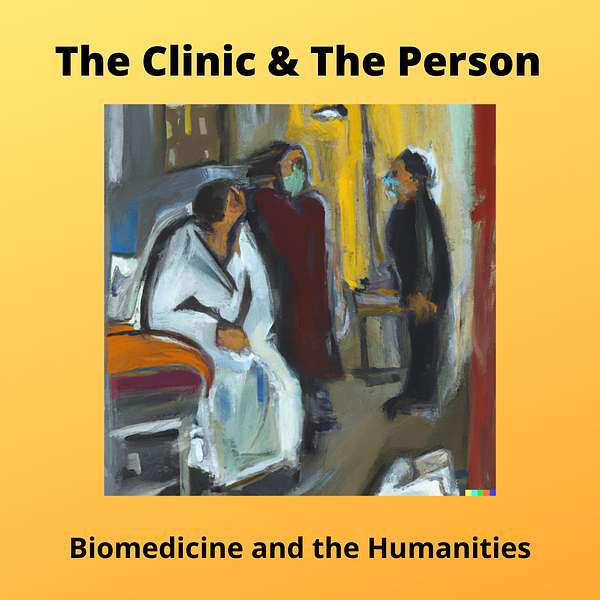
The Clinic & The Person
The Clinic & The Person is a podcast bringing knowledge and perspectives from the humanities to certain aspects of biomedicine. “The Clinic” represents all that biomedicine brings to bear on diseases and treatments, and “The Person” represents all that people go through with health problems. Our episodes draw from works in the humanities—any genre—directly related to how people are affected by specific clinical events such as migraine headaches, epileptic seizures, and dementia, and by specific health care situations such as restricted access to care and gut-wrenching, life and death choices. We analyze and interpret featured works and provide thoughts on their applications in patient care; health professions education; clinical and population research; health care policy; and social and cultural trends and preoccupations. Often joining us are the creators of works we feature or experts on the topics we select.
The Clinic & The Person
Painting an Ideal: Luke Fildes’ The Doctor with Hannah Darvin
The renowned English social realist and portrait painter, Luke Fildes (rhymes with “childs”), created The Doctor in 1891 after Henry Tate commissioned a painting from him for his new museum, the Tate Britain. The subject of the painting was Fildes’ choice. Despite a poor reception among art critics when it was first exhibited, the painting quickly became iconic as the physician ideal. Over its 133-year history, the painting has been used for a variety of purposes, including inspiration, education, propaganda, and politics. During that time, the ways in which the painting represents the physician ideal changed. We talk about these aspects of the painting with Hannah Darvin from Queen’s University in Kingston, Ontario, Canada. She has conducted extensive research into the painting and its creator.
Links
- Image of The Doctor from the Tate Britain Museum.
- About Hannah Darvin at Queen’s University.
- Hannah Darvin’s description of her research for the Harvey Cushing/John Hay Whitney Medical Library at Yale University.
- John Brewer Eberly’s diptych rendering a modern version of The Doctor in which computer technology is interjected between doctor and patient.
The next episode will feature opera and how as an art form it can render illnesses in ways that elaborate on bioscience texts and teachings. For examples, we will draw from two operas featuring female characters with tuberculosis (“consumptive heroines”), namely, La Traviata and La Bohème. Joining us will be Linda Hutcheon and Michael Hutcheon, who have combined their expertise in comparative literature and medicine, respectively, with their love for opera into an expansive body of scholarly work making both opera and medicine more interesting and better appreciated.
Please send us comments, recommendations, and questions to this text link, or email to: russell.teagarden@theclinicandtheperson.com.
Thanks for listening, and please subscribe to The Clinic & The Person wherever you get your podcasts, or visit our website.